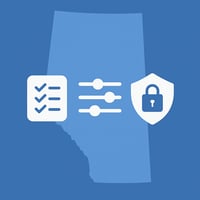Alberta’s compliance landscape just got real. AER 2024_084 is here—and it expects more than good...
Control ≠ Coverage: Why Better Documentation Lowers Risk
Control documentation isn’t just about passing audits. It’s your first line of defence against risk.
When controls are vague, missing owners, or buried in spreadsheets, you’re not just unprepared for compliance reviews — you’re left exposed. This post breaks down what strong documentation looks like, why it directly impacts your risk posture, and how to get it right with BACKSTOP.
1. The Illusion of Control
Most teams think they’re in control. Policies are written. Spreadsheets are filled out. Someone probably owns that control, right?
But when something goes wrong — a missed patch, a failed test, a breach — it becomes clear: writing a control isn’t the same as managing one.
If your documentation is unclear, outdated, or disconnected from accountability and review, your organization is at higher risk than you think.
2. Common Control Documentation Mistakes
Where most teams stumble:
- Using vague language like “ensure appropriate safeguards” without explaining how
- Failing to assign a named owner or track review history
- Storing evidence in disconnected systems or folders
- Letting documentation grow stale or misaligned with practice
- Assuming a spreadsheet is enough
These gaps don’t just hurt in audits. They hide real operational risks — and slow your response when something fails.
3. What Strong Documentation Looks Like
Strong documentation brings clarity, accountability, and a clear path to action. Good control documentation looks like this:
Control descriptions
- What action is taken – in plain language
- How often it occurs
- What tools or systems are involved
- Who performers / reviews – discipline over activity
- How is completion ‘evidenced’.
Additional important control documentation
- Owner – who is accountable for design, effectiveness, and remediation
- What errors can occur and what action is taken when encountered
Good documentation means fewer blind spots. That’s what lowers risk.
4. Why It Matters
This isn’t just about being “audit ready.” It’s about resilience.
With stronger documentation, you can:
- Spot control gaps sooner
- See which risks lack proper coverage
- Prioritize remediation based on strength and relevance
- Enable leadership and IT to share the same view
- Stay aligned as teams shift or roles change
Stronger documentation creates stronger risk management.
5. How BACKSTOP Helps
BACKSTOP makes it simple to document and manage controls with structure, clarity, and zero duplication.
- Record clear ownership and accountability for every control
- Create the foundation for efficient assurance activities
- Link controls to risks and one or multiple frameworks
- Track history, changes, and sign-off in one place
No more scrambling across spreadsheets. No more hoping someone updated that folder.
With BACKSTOP, controls become visible, actionable, and reliable.
From Advisory to Action
You can’t reduce what you can’t see. Weak documentation hides risks.
BACKSTOP brings structure to your control environment so you can focus where it matters most — reducing exposure, strengthening accountability, and building true confidence in risk management.

